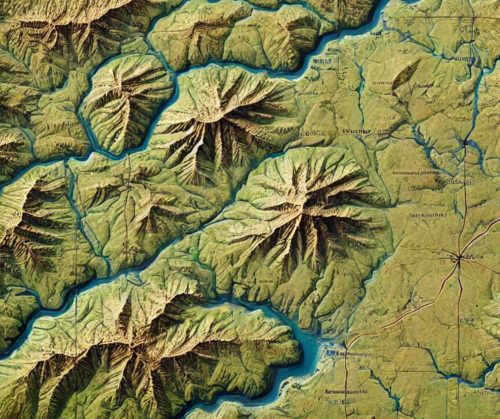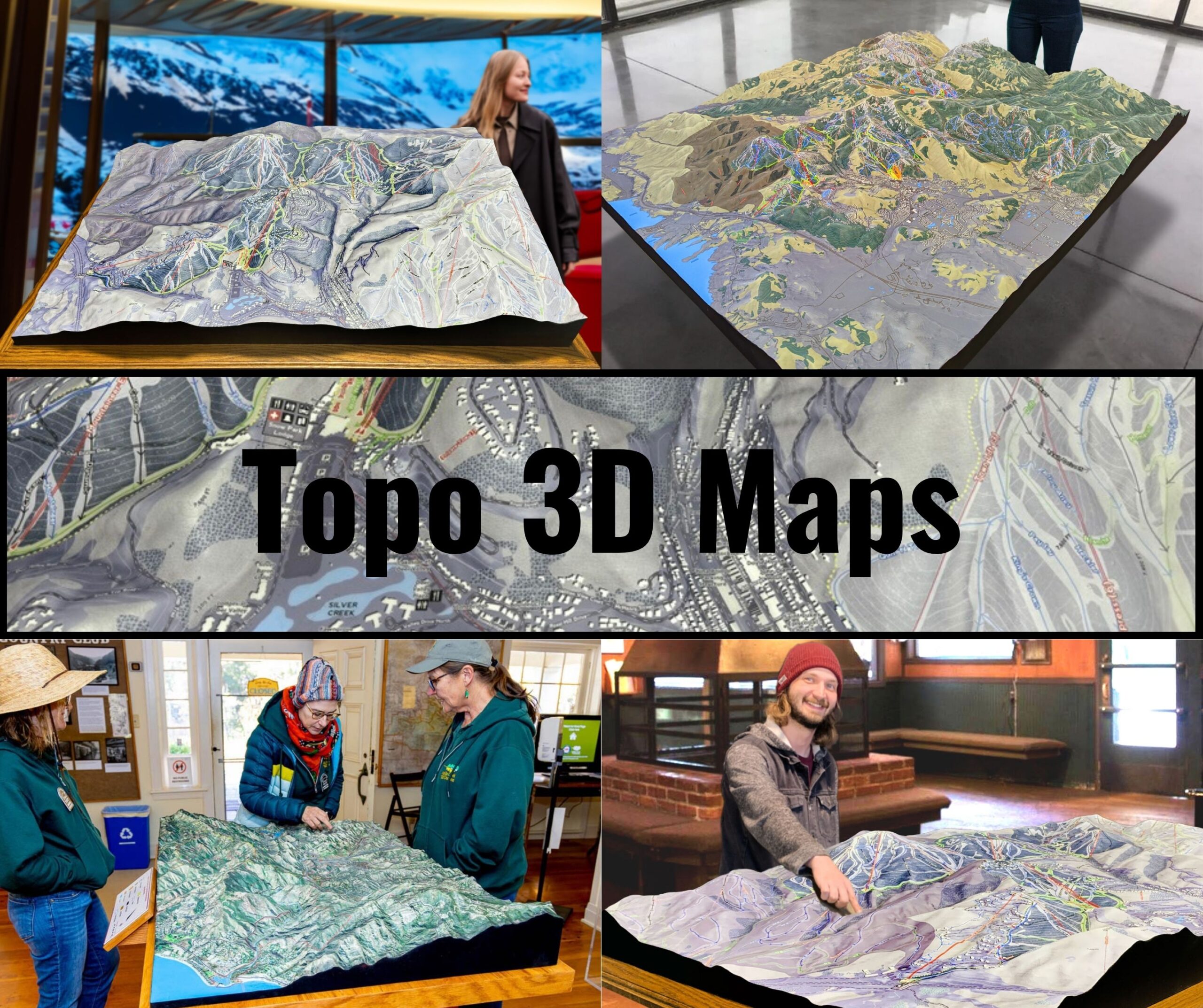Oklahoma Topo Map
Oklahoma Topo Map
We Build Custom 3D Topo Maps
Oklahoma Topo Maps: Exploring the Dynamic Terrain of the Sooner State
Oklahoma, a state known for its sweeping plains and storied history, boasts a surprisingly diverse array of geographical features. From the rolling prairies of the Great Plains to the rugged Arbuckle and Wichita Mountains, Oklahoma’s terrain offers a blend of natural beauty and ecological complexity. Topographic maps are vital for exploring and understanding the state’s varied landscapes, providing detailed visuals of its elevations, rivers, and unique formations.
Oklahoma’s topographic maps, available in both 2D and 3D formats, serve as indispensable tools for adventurers, conservationists, educators, and geologists. These maps bring to life the intricate details of the state’s geography, making it easier to navigate and appreciate its natural wonders.
The Great Plains: Endless Horizons and Subtle Contours
The Great Plains cover much of western Oklahoma, creating a vast expanse of grasslands, mesas, and agricultural fields. This region, characterized by its wide-open spaces and rolling terrain, is a hallmark of the state’s identity.
In 2D topographic maps, the Great Plains are depicted with gently curving contour lines that illustrate the subtle elevation changes of the landscape. Features such as Black Mesa, the highest point in Oklahoma, and the Cimarron River are clearly marked, offering valuable guidance for explorers and conservationists.
3D topographic maps of the Great Plains highlight the subtle undulations of the terrain, the depth of river valleys, and the transitions to higher plateaus. These maps are essential for understanding the region’s ecological importance and planning land management or agricultural activities.
The Arbuckle Mountains: Ancient Ridges and Hidden Caves
The Arbuckle Mountains in south-central Oklahoma are one of the oldest mountain ranges in North America. Known for their rugged ridges, scenic waterfalls, and extensive cave systems, this area is a geological treasure trove.
In 2D topographic maps, the Arbuckle Mountains are represented with tightly packed contour lines that detail their steep slopes and valleys. Features such as Turner Falls, Chickasaw National Recreation Area, and the geological formations of the Arbuckle uplift are prominently displayed.
3D topographic maps bring the Arbuckle Mountains to life, emphasizing their dramatic elevation changes, the depth of their canyons, and the complex patterns of their rock layers. These maps are invaluable for geologists, hikers, and adventurers exploring this unique region.
The Wichita Mountains: Rugged Peaks and Wildlife Refuges
The Wichita Mountains in southwestern Oklahoma are another striking feature of the state’s geography. This region is known for its granite peaks, grasslands, and the Wichita Mountains Wildlife Refuge, which provides a sanctuary for bison, elk, and other native species.
In 2D topographic maps, the Wichita Mountains are depicted with contour lines that highlight their steep ridges, rugged outcroppings, and surrounding grasslands. Features such as Mount Scott, Lake Lawtonka, and the refuge trails are clearly marked, providing a comprehensive view of the area.
3D topographic maps of the Wichita Mountains showcase their rugged beauty, emphasizing the height of their peaks, the depth of their valleys, and the intricate patterns of their granite formations. These maps are essential for outdoor enthusiasts, conservationists, and researchers.
Oklahoma’s Lakes and Rivers: Lifeblood of the State
Oklahoma is home to numerous lakes and rivers that shape its geography and provide essential resources for its residents. Major waterways like the Arkansas, Red, and Canadian Rivers create fertile valleys and offer opportunities for recreation and agriculture.
In 2D topographic maps, Oklahoma’s lakes and rivers are depicted with contour lines that illustrate the elevation changes of their banks and surrounding landscapes. Features such as Eufaula Lake, Keystone Lake, and the Grand River Dam are prominently displayed, offering valuable information for water resource management and recreational planning.
3D topographic maps enhance the understanding of Oklahoma’s waterways, emphasizing the depth of reservoirs, the meandering paths of rivers, and the extent of their floodplains. These maps are indispensable for ecologists, anglers, and paddlers exploring the state’s aquatic systems.
Oklahoma’s Cross Timbers: A Unique Ecological Transition Zone
The Cross Timbers region, stretching across central Oklahoma, is a unique ecological transition zone where eastern forests meet western grasslands. This area is characterized by dense woodlands, open prairies, and diverse wildlife.
In 2D topographic maps, the Cross Timbers are represented with contour lines that detail their rolling terrain and the patterns of their forested areas. Features such as state parks, hiking trails, and river systems are clearly marked, providing a comprehensive view of this ecologically rich region.
3D topographic maps of the Cross Timbers highlight the interplay between wooded hills and open plains, showcasing the subtle elevation changes and the transitions between ecosystems. These maps are invaluable for conservationists, ecologists, and outdoor enthusiasts.
Oklahoma’s Urban Landscapes: Topography in Cities and Towns
Oklahoma’s urban areas, including Oklahoma City and Tulsa, are intricately tied to the state’s natural geography. These cities are built on riverbanks, plateaus, and rolling hills, showcasing a blend of natural and human-made features.
In 2D topographic maps, urban landscapes are depicted with contour lines that detail elevation changes and features such as parks, rivers, and road networks. Notable landmarks like the Oklahoma City National Memorial, the Arkansas River in Tulsa, and the surrounding urban green spaces are prominently displayed.
3D topographic maps of Oklahoma’s cities provide a unique perspective, highlighting the interaction between natural features and urban development. These maps are essential for urban planners, architects, and historians.
How Oklahoma Topo Maps Are Fabricated: Precision Mapping for a Diverse State
Creating topographic maps of Oklahoma involves advanced technology, precise data collection, and skilled craftsmanship. From the rolling prairies to the rugged Wichita Mountains, Oklahoma’s varied terrain demands detailed and accurate mapping.
For 2D topographic maps, the process begins with data collection from sources such as satellite imagery, aerial surveys, and LiDAR (Light Detection and Ranging). This data is processed using Geographic Information Systems (GIS) software to create contour lines representing changes in elevation. In Oklahoma, particular attention is given to capturing the steep slopes of the mountains, the subtle terrain of the plains, and the dynamic features of its river systems. Additional features such as trails, roads, and urban areas are added to create a comprehensive map.
Creating 3D topographic maps involves rendering elevation data into three-dimensional models. Advanced software translates the data into digital 3D representations, which can then be printed using 3D printers or displayed digitally for interactive exploration. For Oklahoma, special care is taken to highlight features such as the granite formations of the Wichita Mountains, the rolling hills of the Cross Timbers, and the depth of its river valleys.
Once the 3D maps are created, they are often painted and finished to enhance their visual appeal and highlight key features such as elevation changes, vegetation, and water bodies. These maps provide a tactile and immersive way to explore Oklahoma’s landscapes, making them invaluable for educators, researchers, and outdoor enthusiasts.
Oklahoma Topo Maps for Conservation, Recreation, and Education
Topographic maps play a vital role in conserving Oklahoma’s natural resources, supporting outdoor recreation, and educating people about the state’s geography. With its diverse ecosystems and cultural landmarks, Oklahoma requires careful management to preserve its environment and heritage.
Conservationists use topographic maps to monitor changes in Oklahoma’s environment, plan restoration projects, and protect critical habitats. For example, in the Wichita Mountains, these maps guide efforts to maintain trails and protect wildlife habitats. Along the state’s rivers, topographic maps are essential for studying erosion and managing water resources.
For adventurers, topographic maps are indispensable tools for exploring Oklahoma’s trails, mountains, and waterways. Hikers rely on these maps to navigate the Arbuckle Mountains or the Black Mesa, while paddlers use them to plan routes along the Arkansas or Red Rivers.
Conclusion: Oklahoma’s Landscapes Through the Lens of Topographic Maps
Oklahoma’s topographic maps reveal the state’s diverse and captivating landscapes in stunning detail. From the sweeping plains of the west to the rugged Wichita Mountains, the fertile river valleys, and the ecological richness of the Cross Timbers, these maps capture the beauty and complexity of the Sooner State.
Whether you’re an adventurer exploring Oklahoma’s natural wonders, a scientist studying its ecosystems, or an educator teaching geography, topographic maps provide an invaluable tool for understanding and appreciating the state’s terrain. With both 2D and 3D options available, these maps ensure that future generations can continue to explore, protect, and enjoy the landscapes that make Oklahoma unique.
Check out WhiteClouds’ 3D Maps for more information on Oklahoma topo maps.

